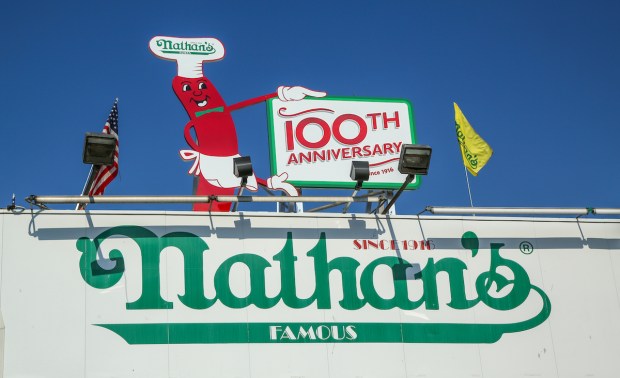
While ghost kitchens have stuck around since their initial boom in the earlier stages of the pandemic, quick-service restaurant (QSR) brand Nathan’s Famous sees smaller players bowing out.
Phil McCann, vice president of marketing at Nathan’s Famous, noted in an interview with PYMNTS — following the brand’s recent move to grant digital platform Franklin Junction exclusive license rights for all future virtual restaurants around the world — that he has seen independent restaurants pull back on preparing virtual brands’ menus in their kitchens amid declining demand.
“We will continue to chase down virtual kitchens, as we have for the last three years, but recently, strategically, we have shifted to going back to the more traditional franchise, brick-and-mortar strategy, versus ghost kitchens,” McCann said. “I think there’s always going to be a place for those kitchens, particularly [in the kitchens of] the bigger players, but I think a lot of mom-and-pops are going away, and I think consumers are kind of stepping away from it.”
He added that increasing fees on delivery platforms are proving frustrating to restaurant customers. As restaurant customers pull back, small eateries may find that the labor economics of preparing a whole separate menu no longer add up.
Still, McCann said for large restaurant chains with the resources to prepare these extra foods, opportunities to boost revenue remain. As such, for Nathan’s licensed virtual restaurants, he noted, “I think that segment of the business will always continue to grow.”
Franklin Junction, for its part, contended that the virtual restaurant space is continuing to “grow tremendously,” as CEO and Co-founder Rishi Nigam told PYMNTS in an interview, but the company is seeing the space change from the early days, where generating buzz was the top priority.
“I think we’re going [to see] a second generation, a more refined, more structured age of virtual restaurants, where people are looking deeply at quality,” Nigam said. “They’re looking at repeat transactions, they’re looking at delivering value to customers. They’re looking at more long-term sales opportunities, rather than what we went through the first time, where there were a lot of made-up concepts or celebrity concepts.”
He contended that now there is a stronger focus on success over time rather than attracting attention in the short term.
A share of consumers is open to ghost kitchens. The PYMNTS Intelligence report “Connected Dining: The Robot Will Take Your Order Now,” which drew from a survey of nearly 2,000 U.S. consumers, revealed that 48% said they are interested in virtual kitchens. Three-quarters of those who are open to the technology reported that they like it because they believe that it enables greater speed, ease and convenience than traditional restaurants can offer.
Plus, many consumers engage with restaurants only via digital channels. The PYMNTS Intelligence study “Consumer Interest in an Everyday App,” which drew on insights from a survey of more than 3,300 consumers in the United States and Australia, revealed that 1 in 4 restaurant customers in the U.S. had exclusively purchased food from restaurants using internet-connected devices in the prior month. Another 36% did so both via connected devices and traditional channels (such as call-in or in-person).
Ultimately, McCann contended that virtual restaurants would continue to be relevant down the line, even if the industry continues to evolve.
“The concept of a virtual kitchen or a ghost kitchen is still a very smart one,” he said. “… These people who are ordering [delivery] online, they’re not coming out to your restaurant. They just aren’t. They want food delivered to their door. They want the ultimate in convenience, and that is never going to go away, in my opinion.”